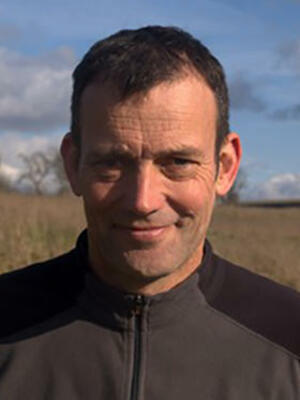BBSRC project ref. BB/L019035/1
Boundary areas between different populations are the crucial places where pathogens spill over from one population to the other, and present a key risk for the emergence of new pathogens, or invasion by existing pathogens. An important example of this type of boundary are the edges of wilderness areas, where pathogens present naturally in wild animals can spill over to infect people and livestock living in the surrounding areas. In sub-Saharan Africa, this scenario often affects human populations with few economic resources. The proximity of vulnerable populations to areas harbouring pathogens provides a technical and moral challenge: how can biodiversity and economically productive wilderness areas be preserved without threatening the health and livelihoods of vulnerable people?
This project studied the interaction between humans, livestock and wildlife and the role of this transition zone in the transmission of trypanosomes at the edge of the Serengeti National Park in Tanzania. These single-celled parasites are transmitted by the bite of tsetse flies. They do not cause any overt disease in wild animals within the Park, but humans bitten by tsetse infected with a particular species of trypanosome can develop sleeping sickness, a potentially fatal disease for which there is no preventative vaccine or drug. Other species of trypanosome also present in wild animals can cause a wasting, and ultimately fatal, disease in livestock.
Tsetse flies are highly mobile and can move from their natural habitat within the park to infect humans and livestock in surrounding areas. In east and southern Africa, the species of tsetse that transmit trypanosomes usually feed on wild animals rather than humans. However, changing housing and farming practices reduce the availability of wild hosts to tsetse and increase the risk of humans being bitten by infected flies. It is estimated that 12 million people in east and southern Africa are at risk of sleeping sickness and the preservation of wilderness areas present a chronic and intractable source of infection.
Preliminary data suggest however that there are restricted hotspots of disease risk, particularly at the edges of national parks, and that the application of modern methods of tsetse control to these hotspots will eliminate sleeping sickness foci.
To assess whether focussed control of tsetse is effective, we developed mathematical models of the transmission of trypanosomes in the transition zone from wildlife-dominated areas on the park boundaries through to livestock-dominated areas outside the parks. The models have enabled us to predict the likely extent, duration and cost of interventions required to interrupt the transmission of trypanosomes at boundary areas.
Parameter values for the models were obtained using a combination of existing and new data on (i) the distribution, abundance, structure and infection status of tsetse populations, (ii) the densities of wildlife and livestock hosts, (iii) the number of livestock infected with trypanosomes, (iv) the composition and population genetics of the trypanosome populations and (v) the vegetational changes that occur at the boundary of the Serengeti National Park. The models were validated by comparing the observed and predicted patterns of infection in the study area.
Subsequently, we have used the models to predict the likely impact of various control interventions, and identify which are the most appropriate control measures for livestock keepers, NGOs and government agencies concerned with controlling trypanosomes at different distances from the boundaries of protected areas. The project's outputs are contributing to the disease control strategies being developed and implemented by Tanzania and other countries affected by tsetse-borne trypanosomiases.
The project was a collaboration of groups from the Liverpool School of Tropical Medicine (Jennifer Lord, Rachel Lea, Jessica Lingley, Steve Torr), the Vector and Vector-Borne Diseases Research Institute in Tanga, Tanzania (Mechtilda Byamungu), the Tanzanian Veterinary Laboratory Agency (Furaha Mramba), the South Africa Centre for Epidemiological Modelling and Analysis (John Hargrove, Glyn Vale), Scotlands Rural Colleges (Harriet Auty), the Roslin Institute at the University of Edinburgh (Liam Morrison).



